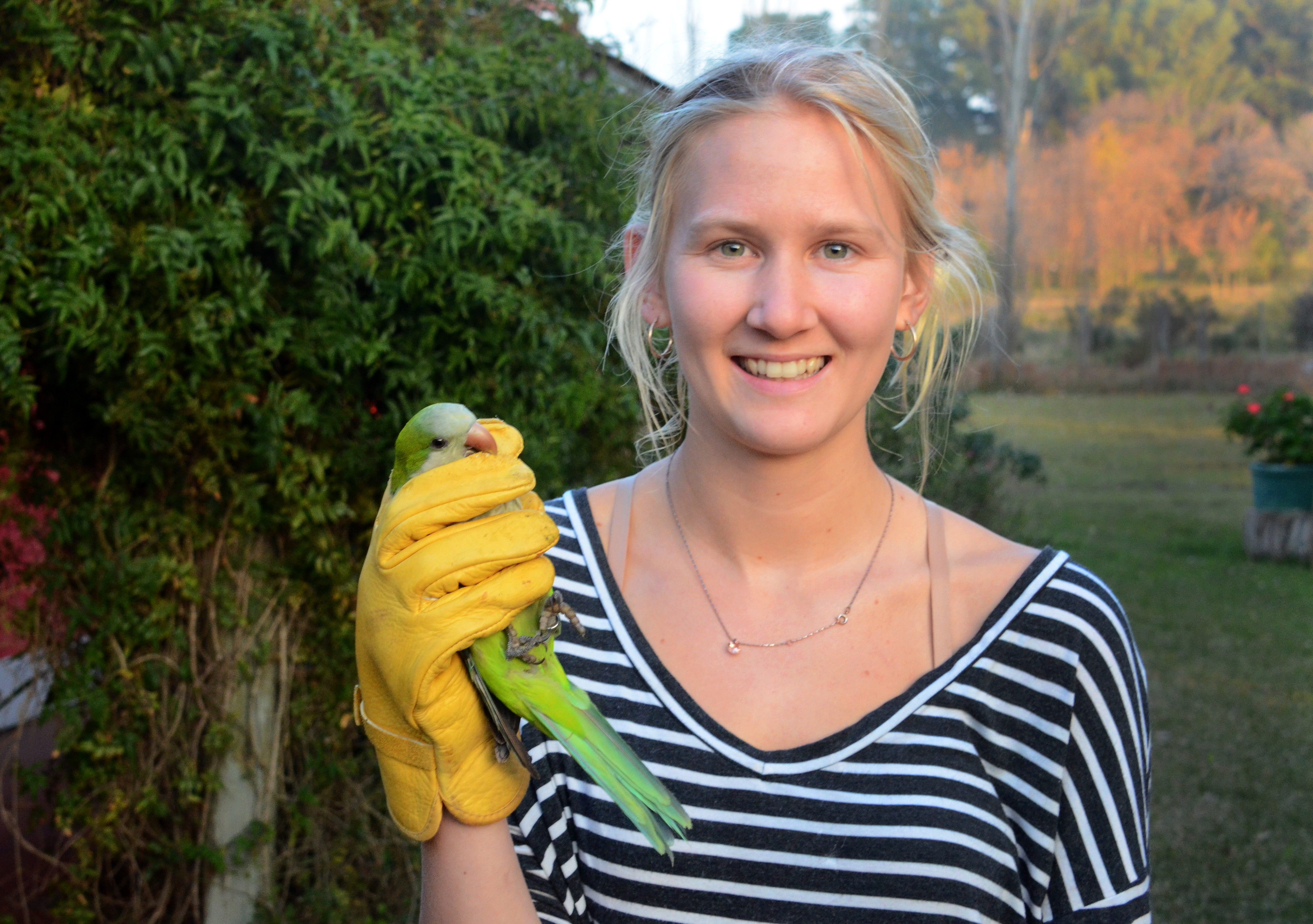As winner of the New Mexico State University Honors College Scholarship for International Research, biology student Clara Hansen’s dream came true when she was able to take her research to the next level.
 |
| Clara Hansen, right, New Mexico State University biology student, conducts research on vocal learning with parrots this past summer in Uruguay, South America. (Courtesy photo by Tania Molina) |
|
 |
| Clara Hansen, New Mexico State University biology major, holds a monk parakeet while doing international research this last summer in Uruguay, South America. (Courtesy photo by Tania Molina) |
|
 |
| A monk parakeet is pictured in Uruguay, South America, where Clara Hansen, New Mexico State University biology major, did international research last summer. (Courtesy photo by Clara Hansen) |
|
Hansen traveled to Uruguay, South America, to continue her research on wild monk parakeets after winning the scholarship. Her work is part of the Howard Hughes Medical Institute program at NMSU.
“For two years now I have been working in an avian laboratory conducting behavioral experiments on parrots within the confines of an indoor aviary, always dreaming of conducting similar experiments in the wild,” Hansen said. “This scholarship made my dreams come true, enabling me to take my project into the wild to get a better understanding of how parrots interact within a natural setting.”
Hansen is mainly working with a species of parrot native to Uruguay. According to Hansen the monk parakeet is very unique when compared to other parrot types; instead of making its home in the hole of a tree, it builds bulky stick nests used as public nesting locations. These birds acquire tight social organizations; birds within colonies remain in groups throughout the year.
Hansen’s project work abroad included mapping geographic variation in vocalizations between these social organizations.
“These patterns of variation in vocalizations are well known as arising from vocal learning abilities, similar to dialects in human societies,” Hansen said. Measuring vocal differences over geographic distances will signify separate levels of sociality. By undertaking this study, she can conclude which social scales are important for vocal communication and transmission of information in the species.
Conducting field work for eight weeks, Hansen said, “I loved every minute of it.” In Uruguay, she learned about the struggles and enjoyment of doing fieldwork. She has received new research skills that will help vastly in her future career. “This opportunity has made me an overall better researcher and solidified my passion for avian research,” Hansen said.
While doing exploration in Uruguay, Hansen worked with a colleague, Grace Smith Vidaurre, NMSU biology graduate and Fulbright fellowship recipient. Tim Wright, associate professor of animal behavior and evolution in the NMSU Department of Biology, advised Hansen and Vidaurre. Wright said Hansen and Vidaurre were both hosted abroad by Enrique Lessa, professor at La Universidad de la República. Lessa is an alumni biology student from NMSU.
Wright said, “Clara is an outstanding student. We are very grateful to the Honors College for their generous support of Clara’s work, which will expand her international horizons and hopefully lead to future opportunities for collaboration between students and faculty from NMSU and La Universidad de la República.”
For more information on how to receive an opportunity like Hansen’s, contact Tim Ketelaar, Honors College associate dean and director of the Office of National Scholarships and International Education, at ketelaar@nmsu.edu. Both sophomore and junior Crimson Scholars are qualified to apply for the Honors College International Research Scholarship. Recipients obtain $5,000, paid the summer prior to junior year or during the student’s junior year. If selected as a junior, students must use the scholarship the following summer. Community college students are allowed to participate; however, they must enroll at the main campus by the time of the award.


